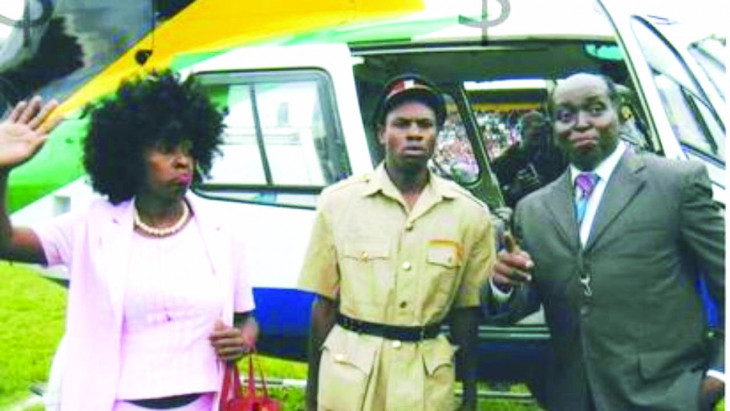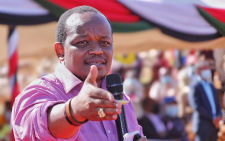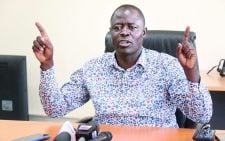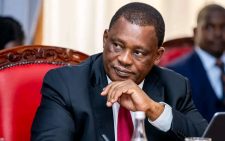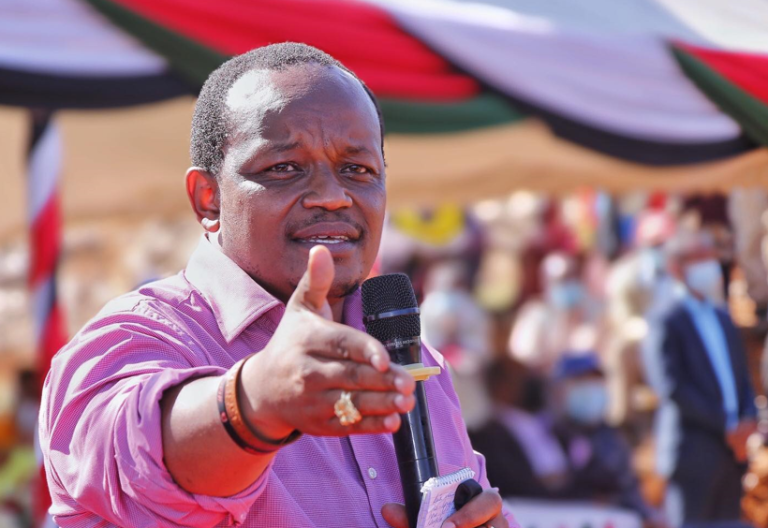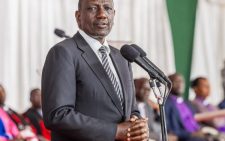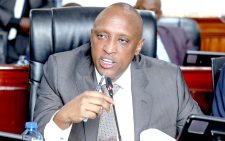For years a student of Kibaki, Uhuru follows footsteps to…
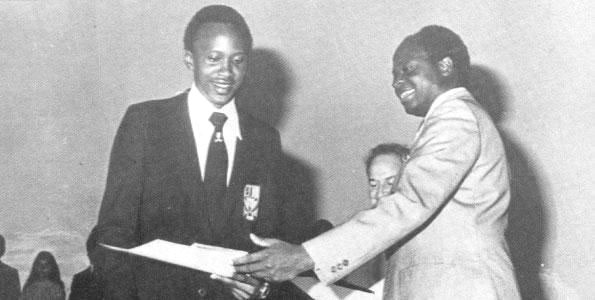
Uhuru Kenyatta
When he was born to Ngina Muhoho and Mzee Jomo Kenyatta in the dying days of the colonial administration in October 1961, it was Mwai Kibaki, then the Kenya African National Union (Kanu) Executive Officer, who suggested that he be named ‘Uhuru’.
That was in commemoration of the imminent dawn of uhuru or independence and the hope that freedom portended for the Kenyan people.
But when he named him Uhuru in 1961, Kibaki would never have guessed that in years to come, political karma would first set him and the toddler he held in his arms apart, before drawing them close in different and profound ways, or that the younger man would follow in his very footsteps in ways more than one.
Moi, who was retiring as President, announced that Kenyatta was his chosen successor and would be Kanu’s flagbearer in the 2002 Presidential election.
In so doing, he not only caused a furore that split his party into ‘Old’ and ‘New Kanu’, but placed Kenyatta in the crosshairs of his ‘father’, Kibaki — the Opposition candidate who had named him as a baby and whose children were Kenyatta’s friends. It was a mismatch.
Massive national wave
Here was a political greenhorn backed only by Moi’s fanatic Rift Valley following in a party that had lost favour taking on one of Kenya’s most consummate, astute and experienced politicians — an erudite policy wonk and cunning political fox at the helm of a massive national wave that wanted Kanu dead and buried.
Not surprisingly, when the last ballot was counted, Kibaki was president. It was a 70 per cent rout that nonetheless thrust Kenyatta, then MP for Gatundu South, into Kibaki’s former front bench seat in Parliament as Official Leader of Opposition.
It was not yet Uhuru, but ‘the apprentice’ was back. The Opposition benches were unfamiliar turf for Kanu and its new, young leader.
Long associated with kleptocracy and incompetence, it now fell upon the maligned independence party to call out the excesses of government, a role that Kenyatta took up with gusto. This role, however, placed him once more on opposite ends of the table with Kibaki, each time he challenged the government as Opposition chief. As time went by, his position as Kanu chairman became tenuous.
He had beaten powerful Moi-era Cabinet Minister Nicholas Biwott to the post in 2005. However, as the 2007 poll approached, remnants of ‘old KANU’ politicians, still smarting from being stood over by Moi in 2002, wanted him replaced.
They were dying to present a Presidential candidate, but Kenyatta had strategically calculated to sit it out, knowing that to run against Kibaki — who now enjoyed the advantage of incumbency — for the second time would be committing political suicide.
It was virtually impossible to garner the crucial Gikuyu vote, and foolhardy to challenge the combined might of two of the senior-most Kenyan politicians of the time: President Kibaki and Orange Democratic Movement (ODM-Kenya) leader, Raila Odinga.
In any case, the ground had long shifted. Rift Valley, the bedrock of Kanu, was now in the hands of Odinga and William Ruto after they were freed from the Cabinet for teaming up with Kanu and Kenyatta to vote ‘No’ during the 2005 Constitutional referendum, which the government lost.
With Rift Valley gone, Kenyatta knew, Kanu had little hope of winning the election. ‘The apprentice’ had clearly learnt crucial lessons from his 1992 debacle.
But ‘old Kanu’ wanted its way, and in 2006, Kenyatta was replaced as party chairman by Biwott. It took a court ruling the following year to reinstate him.
Now firmly back in the saddle, and to the chagrin of Kanu diehards, Kenyatta announced that the party would be supporting President Kibaki’s Party of National Unity (PNU) in the 2007 General Election.
For the first time in 15 years, Kibaki and Kenyatta would be sitting at the same table and pulling in the same direction.
The 2007 election results were bitterly contested and, on 17 April 2008, a coalition government, the Government of National Unity, was formed with Kenyatta, the former Official Leader of Opposition, sworn in as Deputy Prime Minister and Minister for Trade, with James Omingo Magara as his deputy.
In January 2009, he was appointed Finance Minister to replace Amos Kimunya.
In December 2010, he was named alongside suspended Education Minister Ruto, Industrialisation Minister Henry Kosgey, Secretary to the Cabinet Francis Kirimi Muthaura, former police chief Mohammed Hussein Ali and radio journalist Joshua arap Sang by the ICC as a suspect for instigating the 2007–2008 post-election violence in which about 1,500 Kenyans died and 350,000 were displaced.
As a result, Kenyatta resigned from his position as Finance Minister, but retained the portfolio of Deputy Prime Minister. Faced with the possibility of living out the rest of his years in the menacing shackles of an international prison, Kenyatta’s life and political career seemed done and dusted.
But far from cowering with fear, Kenyatta and Ruto joined The National Alliance (TNA) — a political party run by a band of youthful Kenyans — and set sail for a seemingly perilous journey.
To the shock of Kenyans, when that boat docked at the 2013 General Election, it had out-sailed Prime Minister, Opposition Leader and perceived frontrunner Odinga and ODM. Uhuru Kenyatta became the fourth President of the Republic of Kenya. It was no longer not yet Uhuru. ‘The apprentice’ had come of age.
Raila Odinga
In the political formation before the 2002 General Election, Odinga’s Liberal Democratic Party (LDP) joined National Alliance Party of Kenya (NAK), an amalgamation of parties whose luminaries, then, were Kibaki, Michael Kijana Wamalwa and Charity Kaluki Ngilu.
Odinga’s arrival in the NAK corner prompted the formation of the National Rainbow Coalition (NARC). Alongside Ngilu, Kibaki, Wamalwa, Moody Awori, Kipruto arap Kirwa, George Saitoti and Kalonzo Musyoka, Odinga became a member of the NARC Summit — the main engine that ran the NARC campaigns. By that point, many Kenyans had made it clear they were tired of the independence party, the Kenya African National Union’s (Kanu) rule and wanted a change.
The vexing question was, who would lead a united opposition. This was where Odinga’s political genius played out.
He kept himself ahead of the curve. When it was least expected, he made two of the most consequential public statements that helped birth Kenya’s third — and some say most effective — Presidency since independence.
Both statements were made in 2002. The first, “Si ata Mzee Kibaki anatosha?” was a question he asked a massive crowd at Uhuru Park in Nairobi on 22 September 2002. Odinga’s query, which translates to “Doesn’t Mzee Kibaki suffice?” settled the debate.
From then onwards, the Opposition closed ranks around the NAK leader and NARC was born. In four months, what had seemed impossible — the end of Kanu’s 40 years in power — happened.
But before this new era began, Kenyans were to endure a gut-wrenching jolt about one month before it started. On 3 December 2002, the NARC Presidential candidate, Kibaki, was returning to Nairobi from a campaign rally in Machakos when his vehicle rolled several times at the Machakos-Mombasa Road junction, about 50km from the capital city. Kibaki suffered serious injuries and had to be airlifted to London for specialised treatment.
The country held its breath. The Opposition fretted about what would happen next. There was widespread despondency. But not for long because Odinga, still himself reeling in shock, went public with this statement: “Our captain is injured but the game will go on. We shall continue with our campaign until our captain returns.”
The 2003 Constitution review conference aggravated the relationship between the Kibaki and Odinga factions. While Odinga’s camp pitched for an autonomous premier, Kibaki’s group favoured a ceremonial premier and an autonomous president. These divisions led the country to the 2005 referendum. Kibaki’s faction was for the new Constitution.
Odinga’s camp, however, persuaded Kenyans to reject the proposed Constitution. After losing the referendum, Kibaki made a move not witnessed before in the history of independent Kenya. He fired his entire Cabinet. He invoked the powers given to him by the Constitution and fired all ministers and their assistants and promised the country a new Cabinet in a fortnight. Only two people survived Kibaki’s axe — Vice President Awori and Attorney General Amos Wako. Out with Odinga went William ole Ntimama (Public Service), Anyang’ Nyong’o (Planning), Kalonzo Musyoka (Environment), Najib Balala (National Heritage and Culture), Ochillo Ayacko (Sports) and Linah Jebii Kilimo (Immigration and Registration of Persons).
The consequence of Odinga’s exit from Kibaki’s first Cabinet was a complete deterioration of the relationship between Kibaki’s NAK and Odinga’s LDP.
This led to the collapse of NARC in 2006. Odinga moved on to the Orange Democratic Movement (ODM). Afterwards, in preparation for the 2007 Presidential elections, Kibaki formed his own coalition, the Party of National Unity (PNU).
On 27 December 2007, after months of fierce political campaigns, Kenyans went to the polls to elect a new Parliament and President.
The frontrunners in the Presidential race were Kibaki of PNU, then aged 76, and Odinga of ODM, then aged 62. The ODM party won most Parliamentary seats but Kibaki beat Odinga in the presidential poll.
Odinga immediately contested the election results. Protests ensued in Odinga’s support bases. The protests degenerated into horrific acts of violence. More than 1,000 Kenyans consequently lost their lives. Over 350,000 others were displaced.
Concerned that the violence in Kenya could morph into a civil war, the international community put Kibaki and Odinga under pressure to call a truce. Under the auspices of a group of African leaders led by former United Nations Secretary-General Kofi Annan, the Kibaki and Odinga factions negotiated for 41 days.
Eventually, on 28 February 2008, the two sides of the political divide struck a deal. Under the peace deal, Kibaki retained the Presidency while Odinga became the Prime Minister, a newly-created position.
The agreement, known as the National Accord and Reconciliation Act, clearly spelt out the Kibaki-Odinga power relations. The President remained the Head of State while the Prime Minister had powers to coordinate and supervise the execution of government functions and affairs.
Further, the National Accord stipulated that: “the composition of the coalition government shall at all times reflect the relative parliamentary strengths of the respective parties and shall at all times take into account the principle of portfolio balance”.
William Ruto
William Ruto, committed as he was to the politics of high performance in service delivery, was certainly a target of several of his colleagues. In particular, he had a complicated relationship with Raila Odinga, his party leader.
As a result, Ruto’s position in the government went from that of a potent technocratic favourite to one simultaneously embattled and besieged. By late 2009, Ruto’s many enemies were sufficiently emboldened by his fraught relationship with Odinga to launch a subversive coalition. The maize scandal was used as an excuse to call for Ruto’s resignation and a censure motion in Parliament.
When the censure motion was finally put to vote, it was defeated. In moving too swiftly and clinically to dispatch Ruto from high-level politics, and rallying a coalition of Ruto’s momentary enemies, Odinga had shown his hand.
In defying his boss and obstinately resisting calls to resign, then mobilising a motley coalition of Odinga’s rivals and enemies, Ruto had also shown his.
There would be no turning back, and a vicious contest was on that both parties would prosecute for the next decade, with Ruto scoring successive wins against Odinga, and inflicting significant damage to a once invincible march to power.
Ruto established his credentials as a resilient survivor and scrappy contender in the wild terrain of Kenya’s politics. Odinga’s next move was to remove Ruto from government, citing powers granted to him as Prime Minister by the National Accord.
This backfired when Kibaki reversed Odinga’s action using his executive mandate. The only concession for Odinga was the transfer of Ruto to Higher Education.
When the referendum was launched, Ruto spearheaded a coalition of mainly conservative interest groups who had sought changes to the draft in vain, to oppose the passage of the proposed Constitution. Ultimately, it was a lost cause, as, on 4 August 2010, a total of 68.55 per cent of voters approved the document.
Ruto’s effort garnered 2,795,059 votes, representing 31.45 per cent. In this lost cause, Ruto emerged as a towering politician, his mobilisation credentials now properly established.
Two months later, President Kibaki announced that after consultations with Prime Minister Odinga, he had decided to suspend Ruto as Higher Education Minister after he lost a constitutional petition seeking to bar the magistrate’s court from trying him for fraud connected to the 2003 Ngong Forest land case.
Another two months later, Ruto was named alongside Cabinet colleagues Henry Kosgey, Francis Muthaura and Kenyatta, former Commissioner of Police Hussein Ali, and journalist Joshua Sang as the ‘Ocampo 6’ — Kenyans alleged to have masterminded the post-election violence and thus, arraigned to face trial at the International Criminal Court for international crimes and crimes against humanity.
His tour of service as a star-turn in Kibaki’s Cabinet had come to a less than desirable end.
Stories courtesy of the Kenya Yearbook Editorial Board

